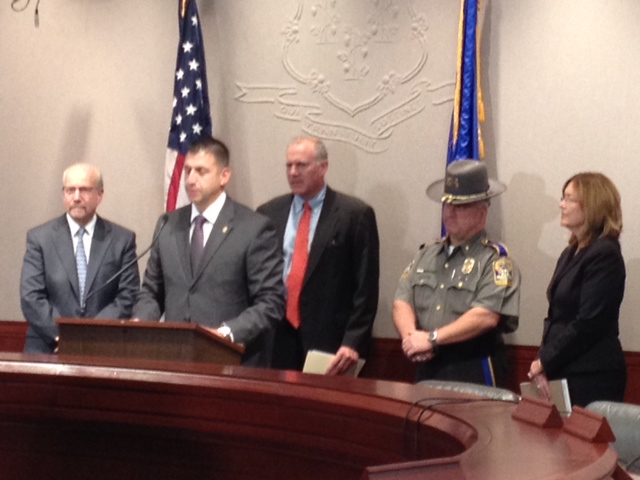New Haven Gun Buyback Program Set for Saturday
/Just one week after the tragic killings of 20 elementary school children and six educators in Newtown, the New Haven Police Department will be conducting a gun buy back program on Saturday, December 22. The event comes three weeks after a similar event in Hartford. The unofficial count for the gun buyback in Hartford on December 1, 2012 was 179 working firearms collected, 145 handguns and 34 rifles/shotguns. Over $10,000 in retail gift cards were given to those turning in unwanted firearms. This single day Gun Buyback program in Connecticut’s Capitol City has collected 464 firearms over the last four years. Stepped up gun buyback programs were mentioned earlier this week by Hartford Mayor Pedro Segarra as a possible component in a comprehensive approach to the Newtown tragedy.
The New Haven gun buyback event is sponsored by the Injury Free Coalition for Kids of New Haven and Yale-New Haven Children’s Hospital’s Injury Prevention Program. The goal is to get guns off the street, out of cars, out of basements and out of bedrooms. It has been estimated that a gun in the home is 22 times more likely to kill a family member or friend than to kill an intruder.
Gun Buyback programs have a history in Connecticut that began almost two decades ago with an overwhelming response in 1994, when then-Attorney General Richard Blumenthal, with the support of the Connecticut Retail Merchants Association and the Connecticut Police Chiefs Association, launched the nation’s first statewide program. The response to the new initiative was far beyond all predictions – more than 4,200 guns, including 210 assault weapons, were turned in within less than a week. That brought the statewide initiative to an end and required some state support by then-Gov. Lowell P. Weicker to fill in the gaps left by retailers and corporations that stepped up to support the initiative.
The approach, however, has continued. Gun buyback programs in Connecticut municipalities – including Hartford, Waterbury, Bridgeport (55 weapons including rifles and handguns in 2010) and New Haven ( a total of 81 weapons in 2011 and 2012) - have been more limited but continue to be successful, taking into account the lessons of the state’s initial effort in 1994 and the need to take a varying approaches to limit gun violence.
Said Chief State’s Attorney John M. Bailey in 1994: “I think it brought reality to the people of Connecticut. That 4,000 guns, including 210 assault weapons, could be turned in in four and a half days made people think how many guns could be out there.”
The annual Hartford gun buyback program was a collaboration between Hartford Hospital, Connecticut Children's Medical Center, St. Francis Hospital, CRT, the City of Hartford, the Hartford Police Department, the Office of the Hartford State's Attorney, and the Emergency Nurses Association.
Saturday’s New Haven buyback will be held at the New Haven Police Academy, 710 Sherman Parkway from 10:00am to 4:00pm, and is open to all Connecticut residents. The department’s policy of “no questions asked” will be in effect allowing individuals to anonymously dispose of firearms without fear of charges for illegal possession when turning in the weapon. Non-operational guns, antiques, BB guns and holsters will be accepted but do not qualify for a gift card.
According to the New Haven Police Department, in order to receive amnesty for illegal possession at the time you turn in the weapon, protocol MUST be precisely followed. The protocol includes:
- Firearms MUST be delivered unloaded;
- Firearms MUST be put in a clear plastic bag and put into another container (gym bag, backpack, etc);
- If depositing ammunition in addition to a firearm, ammunition must be delivered in separate bag;
- If transporting the firearm by car, the firearm must be transported in the trunk of the car;
- After the firearm is screened by officers and determined to be a working firearm, a $50.00 gift card will be given;
- An additional $50.00 gift card will be exchanged for those firearms identified as assault weapons and/or saw-off shotguns(does not include newly sawed off for the purpose to receive extra gift cards);
- Non-operational guns, antiques firearms, BB guns and holsters will be accepted but do not qualify for a gift card;
































